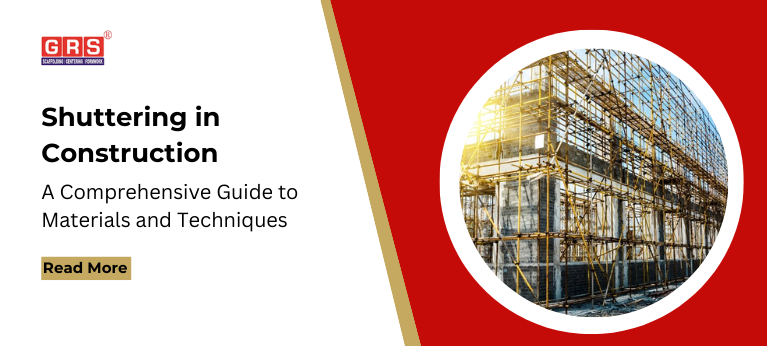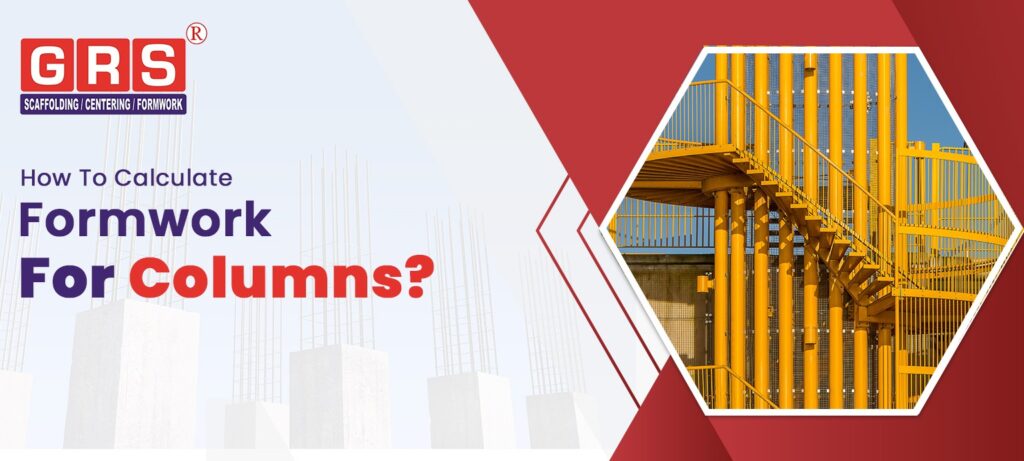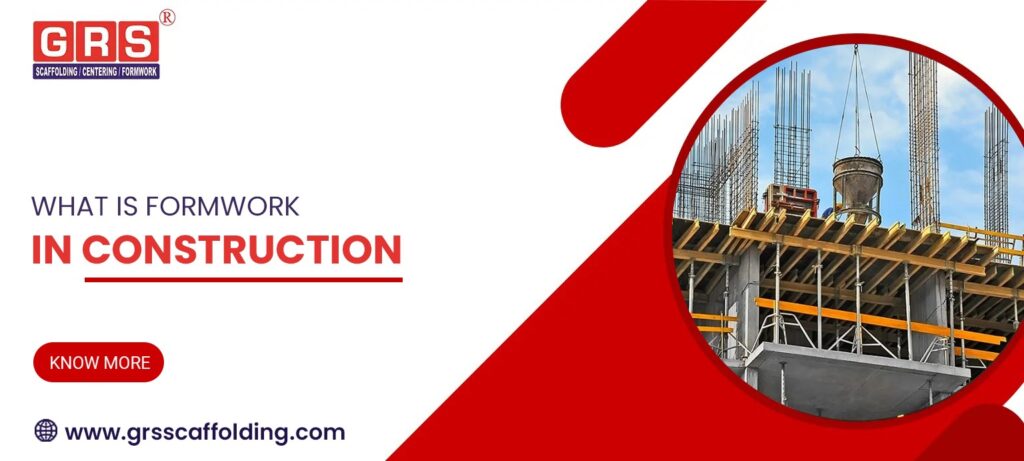Shuttering, also known as formwork, is a critical process in construction that shapes and supports poured concrete until it hardens and gains enough strength to stand independently. This technique provides the necessary mold for concrete, helping form everything from simple walls to complex structural frameworks.
Choosing the right shuttering material is essential for creating stable, precise, and durable structures. In this guide, we’ll cover the basics of shuttering, explore the different types of shuttering materials, and provide a detailed shuttering material list to help you make informed decisions for your construction projects.
1. Understanding Shuttering in Construction:
Shuttering is the temporary framework or mold used to support wet concrete as it sets into a desired shape. It is typically made from materials that can withstand the weight of the wet concrete and resist leakage, ensuring an even, smooth finish.
Once the concrete hardens, the shuttering is either removed (for temporary shuttering) or left in place (for permanent formwork, if desired). Shuttering plays a significant role in structural stability and is a crucial factor in achieving high-quality finishes.
2. Types of Shuttering in Construction:
There are various types of shuttering used in construction, each suited for specific projects and concrete structures:
- Beam and Slab Shuttering: Used for creating beams and slabs in buildings, this type often requires strong materials like steel and aluminum for enhanced durability.
- Wall Shuttering: This is used to shape vertical concrete walls, typically requiring sturdy plywood or plastic formwork.
- Column Shuttering: Specially designed for columns, this shuttering can be adjusted to various shapes and sizes and often uses steel for high strength.
- Foundation Shuttering: Suitable for building foundations, this type is generally made from timber or aluminum for easy assembly and removal.
3. Shuttering Material Options and Their Importance:
Selecting the right shuttering material is crucial, as it impacts the quality, stability, and cost of the construction project. Each material has unique properties, making it suitable for different types of structures and conditions. Here’s an in-depth look at popular shuttering materials and their features:
1. Plywood:
Plywood is one of the most commonly used materials in shuttering due to its affordability, flexibility, and ease of use. Plywood shuttering materials come in various grades and thicknesses, making them suitable for different structural requirements. They provide a smooth finish to the concrete and are reusable for multiple projects.
2. Steel:
Steel is highly durable and provides exceptional strength, making it ideal for large, heavy structures. It’s resistant to warping, moisture, and termites, which makes it a reliable choice for long-term use. Steel shuttering materials offer precision in construction and are often preferred for complex shapes. While they are more expensive than other options, their reusability can offset costs over time.
3. Aluminum:
Aluminum shuttering is lightweight, making it easier to handle and assemble compared to steel. It’s also resistant to rust, allowing for extended use without degradation. Aluminum is a good choice for projects requiring multiple reuses of formwork and is increasingly popular due to its strength-to-weight ratio.
4. Timber:
Timber shuttering, while traditional, is still widely used in construction. It’s easy to shape and cut, making it adaptable for unique or intricate forms. Timber shuttering is cost-effective, but it’s not as durable as metal options and may require additional treatment to resist moisture and termites.
5. Plastic:
Plastic shuttering materials are lightweight, waterproof, and easy to install, making them ideal for quick or temporary projects. They are not as durable as metal shuttering, but their smooth surface provides a fine finish. Additionally, plastic shuttering is reusable, though typically for fewer cycles than steel or aluminum.
4. Comprehensive Shuttering Material List:
A well-defined shuttering material list is essential for efficient planning and budgeting. Here’s a comprehensive list of commonly used materials for shuttering:
- Plywood Sheets: Provides a smooth surface and can be cut to fit different forms.
- Steel Panels: Offers durability and strength for large-scale projects.
- Aluminum Frames: Lightweight yet sturdy, ideal for easy handling and reusability.
- Timber Planks: Cost-effective and adaptable for unique shapes.
- Plastic Formwork: Waterproof and quick to install, suitable for temporary or smaller structures.
- Fiber-Reinforced Plastic (FRP): Lightweight and durable, often used for custom forms.
- PVC Shuttering: Easy to assemble and reusable, suitable for small to medium projects.
- Form Ties and Clamps: Essential accessories for holding shuttering panels in place during pouring.
- Release Agents: Used to prevent concrete from sticking to shuttering surfaces, ensuring smooth removal.
5. Advantages of Choosing the Right Shuttering Material:
Selecting the best shuttering material can significantly improve the quality and efficiency of a construction project. Here are some key advantages:
- Structural Precision: High-quality shuttering materials ensure accurate forms, resulting in stable, well-defined structures.
- Enhanced Safety: Durable materials like steel and aluminum reduce the risk of formwork failure, ensuring safety during concrete pouring.
- Cost-Effectiveness: Reusable materials, such as steel and plywood, help minimize costs over time by reducing the need for frequent replacements.
- Ease of Installation and Removal: Lightweight options like aluminum and plastic reduce labor time and costs for setup and dismantling.
6. Factors to Consider When Selecting Shuttering Material:
When choosing a shuttering material for your project, consider these factors:
- Budget: Timber and plastic may be more affordable for temporary projects, while steel and aluminum provide better long-term value.
- Project Scale: Larger structures typically require stronger materials like steel to support the weight of wet concrete.
- Reusability: If reusability is essential, consider steel or aluminum, as they can be used multiple times.
- Concrete Finish: For a smoother finish, materials like plywood and plastic are ideal, while steel and aluminum are preferred for intricate forms.
7. Conclusion:
Shuttering is a vital part of construction, and choosing the right materials can enhance the quality and durability of the final structure. By understanding the advantages and specific uses of each shuttering material and referencing a detailed shuttering material list, construction professionals can make informed decisions that lead to more efficient, cost-effective, and visually appealing outcomes.
Whether you opt for plywood, steel, or innovative materials like FRP, the right shuttering solution will support your construction goals while ensuring safety and stability.


